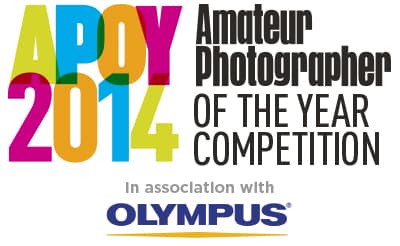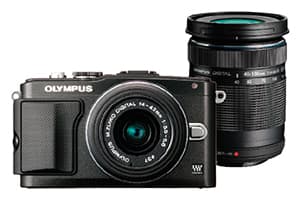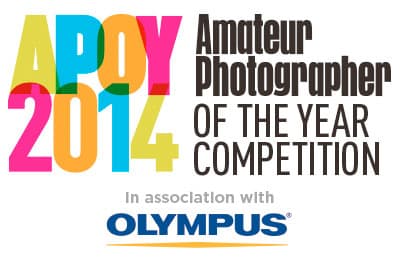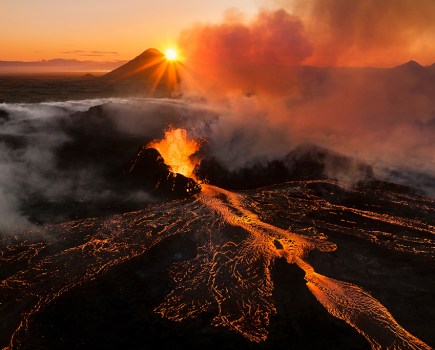APOY 2014 Round 10 – Architecture

Please visit the APOY 2014 home page to find all the rules for entry, terms and conditions, the APOY ENTRY EMAIL ADDRESS, Entry Form (for postal entries), and the disclaimers that must be copied and pasted into an email entry.
Entries must be received by 5pm (UK time) on 2 January 2015
For final round of APOY 2014, we’re looking for eye-catching images of exterior architecture, so no images shot in a building’s interior, please. Interesting architecture has been produced throughout many stages of history. It’s just a matter of knowing how best to capture it through your camera lens. This round offers huge scope to create all manner of creative, dynamic shots. From the early morning sun throwing long shadows onto a gargantuan skyscraper, to the delicate interplay of light and shape in a plush grand theatre, the possibilities are endless.
While there is nothing wrong with exploring the buildings of towns and cities, don’t forget that architecture takes many forms. For example, a bridge can offer all manner of compositional and framing opportunities. Also remember that the surrounding elements can be beneficial to your subject. Too much or too little sky can make or break an image. Take a look at the things that surround your subject – can they be used to give a sense of scale? Finally, don’t be afraid to be a little abstract in your images. Architecture consists of all manner of curves, lines and interesting details. All these things are there for you to explore.
How to enter
Please visit the APOY 2014 home page to find all the rules for entry, terms and conditions, the APOY ENTRY EMAIL ADDRESS, Entry Form (for postal entries), and the disclaimers that must be copied and pasted into an email entry.
 First Prize
First Prize
The first-prize winner will receive an Olympus OM-D E-M10 with a 14-42mm EZ Pancake zoom, a 45mm f/1.8 portrait lens, a 40-150mm zoom, a 9mm fisheye lens, a macro adapter and a street case in which to carry it all. That’s a total retail price of £1,200. The E-M10 has a 16.1-million-pixel, four thirds-sized CMOS sensor and a TruePic VII image processing system.
The 1.44-million-dot EVF displays a 100% field of view and has a 120fps refresh rate. The 14-42mm EZ Pancake zoom lens is the most compact pancake lens and has a maximum shooting magnification equivalent of 0.45x in the 35mm format. The 45mm f/1.8 portrait optic is ideal for low-light portrait work without flash. The 40-150mm zoom has high-speed AF and MSC technology, and the 9mm fisheye lens is ideal for capturing wide angle scenes.
 Second Prize
Second Prize
The second-prize winner will receive an Olympus PEN E-PL5 camera plus a 14-42mm and 40-150mm twin-lens zoom kit worth £500.
The E-PL5 offers serious image quality with its powerful 16.1-million-pixel sensor and a new OM-D component in the TruePic VI image processor. The camera has lightning-fast autofocus, a touch-sensitive LCD screen and full HD video.
 Third Prize
Third Prize
The third-prize winner will receive an Olympus Stylus SP-100EE Ultra Zoom camera, with an impressive 16-million-pixel sensor and 3in LCD screen. The camera includes a handy autofocus lock so you need never lose a shot due to fuzzy focusing.
The camera also features a 50x optical Ultra Zoom lens with a focal length ranging from 24mm to 1,200mm, and built-in Dot Sight to make it easier to focus precisely on distant subjects.
We take a look at some tips and tricks to set you on your way to creating successful images of architecture
Black & White
There are many reasons that you would consider using black & white when shooting architecture. Consider the strong geometric shapes, lines and patterns that go into making a building and how you are going to draw attention to those interactions. When the colour of an image is removed we are left with an image that forces us to consider the remaining elements of a scene. If we look at the above shot, the first thing that strikes us is the repetition of lines and the strong shapes of the structure. Removing the colour has also meant that the sky above the subject is a now a clean canvas that acts as a nice backdrop to the structure.
Lenses
A lens that offers a wide view, such as a 24mm, can give a dramatic sweeping image of a skyline and provide coverage of both foreground and background. Using a wide lens (even a fisheye) can make an interior scene appear far larger and impressive than it really is. However, make sure that you don’t neglect the other end of the scale. Architecture and cityscapes consist of many fascinating elements. A longer lens such as a 70-200mm can help you hone in on some of the most interesting details of your subject.
Composition
Composition is a matter of finding the necessary order in chaos – and that’s not easy when you’re faced with so many competing elements, particularly in a city setting. As a photographer, you need to imagine your scene and subject broken down into a series of manageable geometric shapes and lines. Once that’s done, you’ll soon see how these details work together.
Framing is absolutely crucial here. It’s the device that holds all your subjects in place. Architecture is all about the interaction between basic shapes, but you must always be aware of converging lines. Shifting your position slightly can help to separate out the details and ensure that your shot is not too cluttered and confused. Then you will have a successful image that contains the real character of your subject.
Lighting
The time of day that you shoot can have a great impact on your images. Take a look at how the light of the morning or late afternoon sun interacts with the strong shapes of your subject. But that’s not to suggest that softer light can’t offer you great opportunities, too. The flat grey light of a rainy day can add a great deal of atmosphere to your work and create a mood that would otherwise be lost under the strong sun. Light can be used in a subtle way or in some cases be the subject itself. Experiment and explore.
Please visit the APOY 2014 home page to find all the rules for entry, terms and conditions, the APOY ENTRY EMAIL ADDRESS, Entry Form (for postal entries), and the disclaimers that must be copied and pasted into an email entry.
Entries must be received by 5pm (UK time) on 2 January 2015













